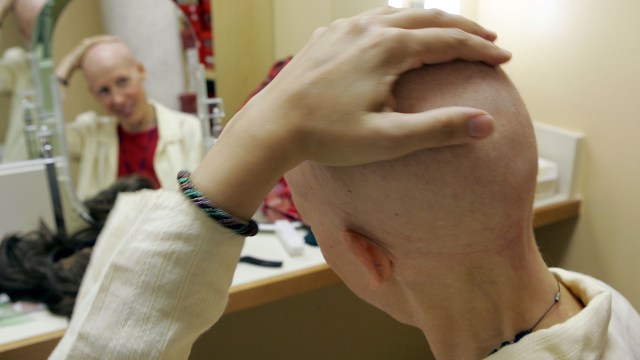‘Star Trek: Discovery’ Confronts The Ethics And Science Of Survival, And Human Frailty

The next-to-last episode of the first season is heavy on plot and character development, but packs a science and ethical punch, too.
What do you do when, after a life-threatening journey into a parallel Universe, you return, only to find that your friends, allies, and civilization is in the final stages of being defeated in a great interstellar war? Where you find yourself facing down the equivalent of the evil, galactic empire your people were a part of in the mirror Universe, only this time, you’re the underpowered underdog, without the technology to survive and compete? There are a few last secrets, tricks, and strategies to be tried, however, and your ship brings with it a renewed, last-ditch hope for turning the tide of this war. You’ve got to take it, right? You’ve got to use every advantage you have; you’ve got to fight dirty; you’ve got to take chances. In short, you have to try. Even, that is, in the face of your own failings and frailties, exposed for all to see. In a plot-heavy episode, Star Trek: Discovery’s 14th episode, “The War Without, the War Within” delivers the goods, hurling us towards a dramatic season finale.

Recap: The episode opens with Emperor Georgiou and Burnham appearing on Discovery’s transporter pad, where Saru is waiting. Immediately, Georgiou points her phaser at Saru, seeing nothing but a Kelpian. To her, he’s just a member of an enslaved race good for making food out of. Why, then, did Burnham bring her back? After blazing through some after-the-fact-lies, we get to the truth: Burnham couldn’t stand to see Georgiou die again. Meanwhile, Tyler is Tyler again, but has Voq’s full set of memories, including the memory of everything he did when he was Voq-in-Tyler’s body, like murdering Hugh Culber and choking Burnham. Saru, ever the rule-follower, keeps Tyler a free man, while Burnham declines to see him. The bridge, now Lorca-free, gives us something we’ve never seen before: an alien, non-human, captaining the flagship of the series, with zero white men on the bridge. It’s the first time, even in a Star Trek series, we’ve ever seen a main crew like this.
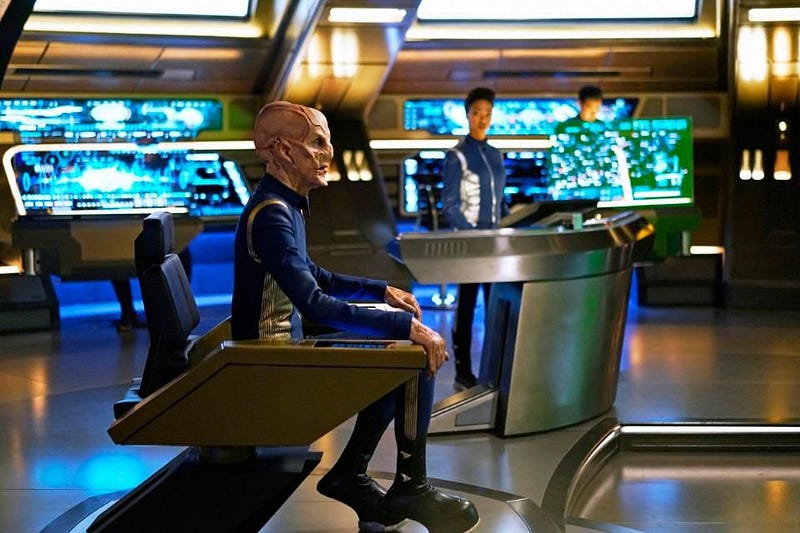
Cornwell, Sarek and company beam aboard Discovery, taking command and catching everyone up on the Federation/Klingon war. The Klingons, with an undetectable cloaking device, have been unbeatable, destroying ships, starbases, and plundering planets at will. With no leadership, they’ve become, as Sarek notes, feudal savages jockeying for power by racing to plunder the Federation and its members. The Admiral meets Georgiou, who expresses what she wants: to go home. (We can intuit what she really wants: to go home with a spore drive.) Cornwall fesses up to the true situation: they don’t know how to get her home and can’t spare the resources to get her there even if she had them. Tyler meets Stamets in the hallway, and they both confront the horrible, awful truth of Culber’s murder, each from their own perspective. In the mess hall, we get to see first Tilly, then Detmer and others, come to join Tyler, treating him like… a human. It’s a big contrast to Tyler’s greatest fears.

They arrive at Starbase 1: the last sanctuary for the Federation’s command, on the outskirts of Earth’s solar system. But they’re too late; all the Federation members are dead, and a Klingon insignia — of a particular house, not of the Klingon Empire — is emblazoned on the conquered starbase. Cornwell, for the first time, freezes in shock. It’s a lot to take in. Back in the brig, Cornwell and L’Rell argue, with the Admiral desperate for a solution that will lead to peace. L’Rell at last gives her one, “conquer us, or we will never relent.” Over in Georgiou’s quarters, she shows her incredible skill at reading people, figuring out Burnham’s connection to Sarek, and then coming up with an even deeper revelation: why Burnham saved her. It wasn’t, as Burnham contends, to show her a better world, but because she couldn’t save her own Georgiou. Harsh, because it’s accurate, and one thing Burnham’s been awful at this season is owning up to her own frailties and failings. This marks the second big lie she got busted telling this episode, along with lying to Saru about the Kelpians in the Terran Empire.
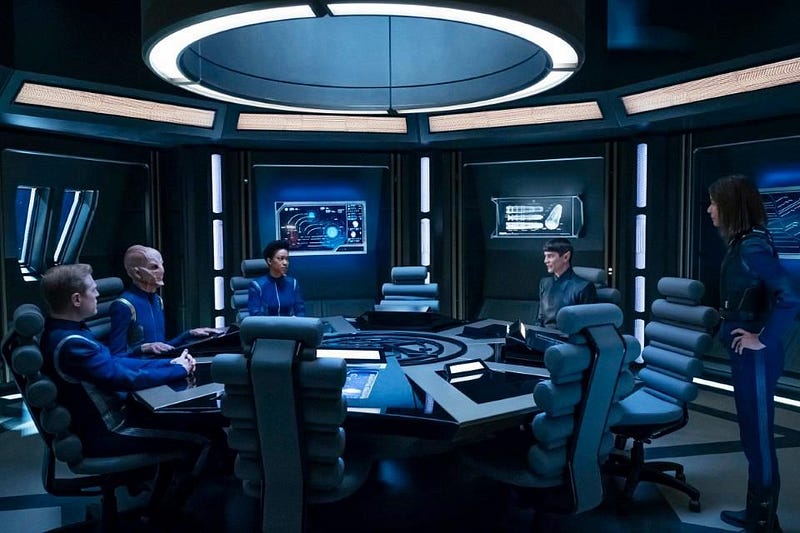
Meanwhile, Georgiou’s plan of attacking the Klingon homeworld, Qo’noS, is slowly crystallizing. Her plan is much harsher than she initially lets on: to turn Qo’noS into a blackened mass of dust, just as she did in the Terran Empire. Sarek, this time, resists, but Georgiou’s words are wiser than his: “You face annihilation. Is it not logical to do anything you can to save the lives of your comrades?” Sarek meets up with Burnham again, and encourages her to stop running from Tyler, and to face her emotions. For the third time, she’s busted lying, to not just others this time, but to herself. Tilly tells her the same thing: go see Tyler. She makes it unambiguous what she’s thinking as she says it: go see Tyler, you coward, because you may never have another chance.

Now, the plan to counterattack begins. Stamets works to terraform an uninhabited world to become a wild mycelium colony, and it works both quickly and spectacularly. (And it’s visually stunning.) A barren wasteland suddenly teems with mycelial life; Discovery now has a source of spores for their jump drive technology. Burnham goes to see Tyler, and confronts him about the wrongs he committed while his body was under Voq’s control. Tyler again sees through her words and gets to the heart of what she, herself, is in denial about: that she can’t handle what it means to love someone as complicated and broken as he is. “This isn’t about a lie, this is about you looking for an excuse to end it… because your parents were killed by Klingons, and you fell in love with one.” Burnham hears the truth and knows it, and knows at the same time that she’s not as strong as the situation requires her to be. By her own admission, she hasn’t been, since the Battle of the Binary Stars.
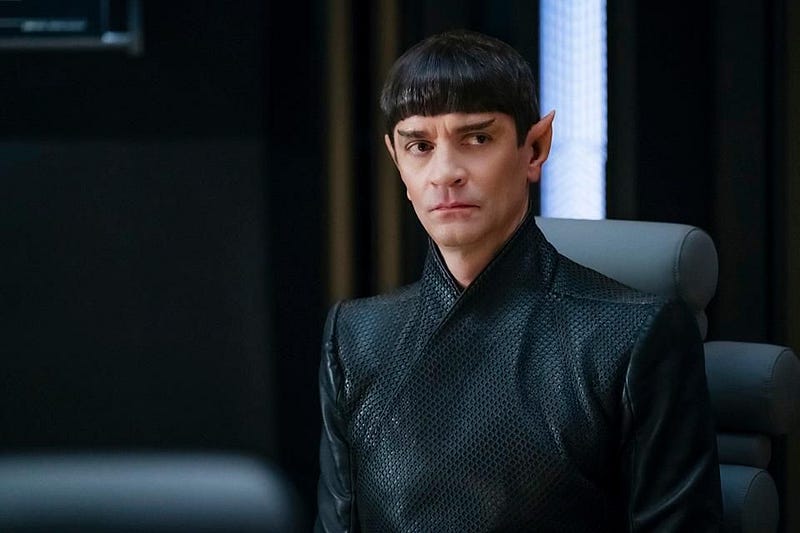
With the spores being collected to power the jump technology, Cornwell and Sarek activate the next step of their plan: revealing their mission leader, “Captain” Georgiou. But this clearly won’t be the reconnaissance mission it’s being presented as. This is about survival. This is war.
The Science: As plot-driven of an episode as this one is, there are still three big scientific themes that come up in “The War Without, The War Within.” They are the consequences of traveling forward in time, the nature vs. nurture argument, and terraforming an uninhabited world. In all cases, there are lessons to be learned from both the real world and what Discovery explored.

Time travel forward is, at least in our physical Universe, practically irreversible. Here on Earth, we move forward through time at the speed we all recognize: one second per second. That sounds like a tautology, but that’s only because we’re (relatively) at rest here on Earth’s surface. If we got into a starship and moved close to the speed of light, our motion through space would lessen our motion through time. If we visited a star 40 light years away, we could use length contraction to get there, by going close enough to the speed of light, in only 6 months. If we then returned, the round-trip would only cost us a year, but back on Earth, 81 years would have passed. Under special relativity, there’s no way to recoup that lost time.
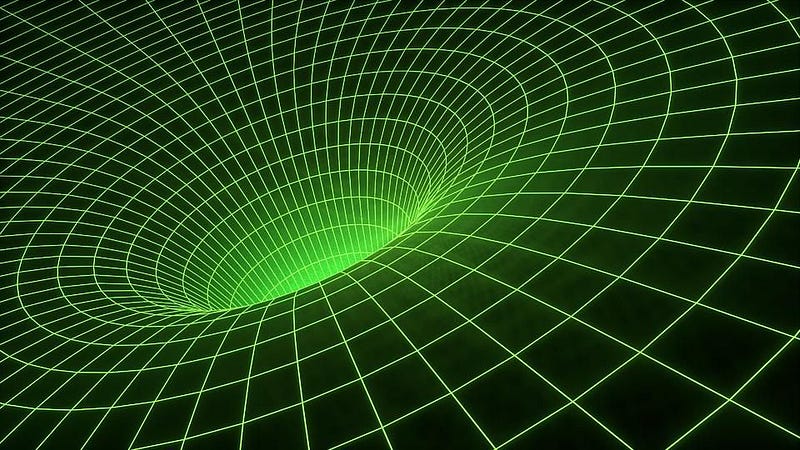
In general relativity, spacetime is the stage where all the particles and their interactions unfold. There are, in principle, ways to connect discontinuous points in your Universe: wormholes, closed timelike curves, or even potentially through parallel Universes, as is the case on Star Trek: Discovery. However, once you’re back in your main Universe, if there are no wormholes, spacetime discontinuities, or ways to jump back into a parallel Universe and try arriving at your desired spacetime location again, it’ll never happen. When you go forward in time, from a practical point of view, you cannot change the past any longer. Unless we discover some new physics — like negative mass, white holes, or a new force/interaction entirely — what’s done is done, even if you skipped being around for it. The quantum experiments that can change the past can only determine an indeterminate state, not undo what’s already done. In other words, the Federation really did lose all those lives.
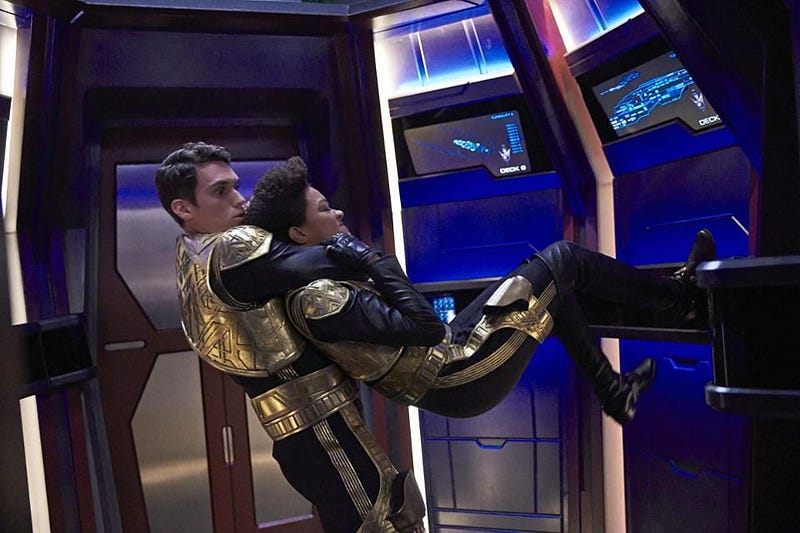
The mirror Universe gave us an interesting look at the classic nature vs. nurture argument. Take Tilly, for example. Known as Captain Killy for her ruthlessness and swiftness when it comes to murder, we have a hard time believing this is the same person. But she believes it. “When we were in the Terran Universe, I was reminded of how much a person is shaped by their environment.” There is darkness within all of us, and Tilly is working on recognizing it, and confronting it; it’s the only way she can conceive of beating it. Everyone human who had a mirror counterpart saw their mirror version act complicitly with the Terran Empire’s villainous actions, regardless of how good and ethical and upstanding they may be in their own Universe.

It’s an unsettling thought, but it’s one that we need to confront. It’s easy to believe that it’s in our nature to be enlightened when we were nurtured in an environment that fosters that; what if we hadn’t been? What if, in fact, we lived in an environment where if we chose that path, we’d wind up dead? The first rule of biology is that you must survive. Your group must survive; your species must survive. You eat, you survive, you reproduce. If that becomes threatened, your nature is to ensure that can still occur. We like to conceive of ourselves as more than mere animals, struggling for survival. As Star Trek: Discovery reminds us, that’s a luxury and a choice that we have because of the circumstances of our world. This isn’t the case for everyone.

Finally, there’s the science of terraforming. Life comes in a variety of formats, feeds off of a variety of different energy sources, and what’s inhospitable to one organism may be ideal conditions for another. The mycelium strain that Stamets wants to grow on an uninhabited world grows like gangbusters there, and this is not impossible! If you take any organism that reproduces quickly, such as a simple, single-celled prokaryote that divides by mitosis, it will consume resources as long as they’re available to grow its population at an exponential rate. 1 organism becomes 2, 4, 8, 16, 32, etc. After just 100 generations, there will be over 10³⁰ organisms on your planet if nothing checks the exponential growth. If we could find an organism that could thrive in the conditions on Mars or Titan, we could begin terraforming in exactly the fashion envisioned by Discovery.
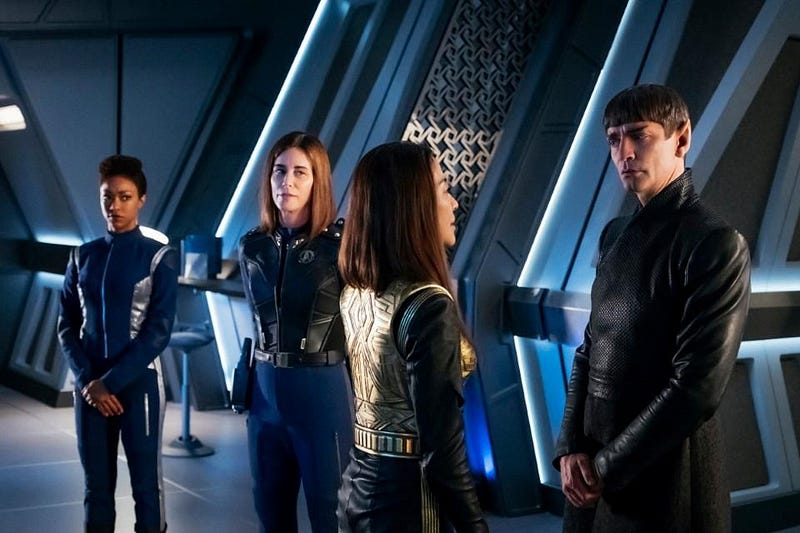
Right and Wrong: The first and foremost ethical issue presented in this episode is the one of survival. It’s a story that’s appeared everywhere from the history of the Hebrews to the movie Friday. For you Star Trek fans who aren’t familiar with Friday, here’s what I’m talking about:
https://www.youtube.com/watch?v=T6-fskZimu4
“You win some, you lose some, but you live.” Only in this case, you’re backed into a corner, and if you don’t pick up that gun — or the equivalent of a game-changing weapon — it’s certain defeat and death. If it’s win or die, if it’s kill or be killed, you have to win; you have to kill. In this case, the entire fate of humanity hangs in the balance.
It’s a new twist on the old adage of desperate times calling for desperate measures. It’s the revelation that Hugh, the long Borg from The Next Generation had when it was demonstrated to him that resistance is not futile. It’s the recognition that the world you live in is not the world you can thrive in by following the status quo, or what got you to this point. In the preview for the next episode, they show the following exchange between Cornwall and Burnham:
Cornwall: “We do not have the luxury of principle…”
Burnham (interrupting): “That is ALL WE HAVE!”
The dustbin of history is littered with the corpses of principled martyrs. Unless there’s another desperate measure that someone has up their sleeve, a catastrophic strike against the Klingons is the Federation’s best hope.

There’s an old story that the Romans used to tell about their old war with the Samnites. The Samnites, in central/southern Italy, were invaded by the Romans, because that’s what the Romans did. Surprisingly, the Samnites were victorious, and captured the Roman army. They didn’t know what to do next, so they asked the prophet. “Kill them all,” was the response. They didn’t like that response, so they asked again. “Set them all free,” was the response this time. Why the two disparate responses, they asked? How do we know which one is right?
As it was explained to them, they’re both right, but anything in between is wrong. If you kill them all, it will take generations before they come back for you again; you will have defeated them so thoroughly they’ll think twice before invading. If you set them free, you show them mercy and goodwill, and they will be unlikely to come back armed and with conquest in mind when they see you next. But if you take an in-between path and send them home bitter, they will come back for you with all the might they can muster, and make you regret your victory. So what did they do? The Samnites picked the worst path possible: the ancient practice of passum sub iugum, where they made the defeated Romans “pass under the yoke” to humiliate them, and then sent them home. There’s a reason you don’t hear of the Samnites after 290 BC. They should have killed them all.
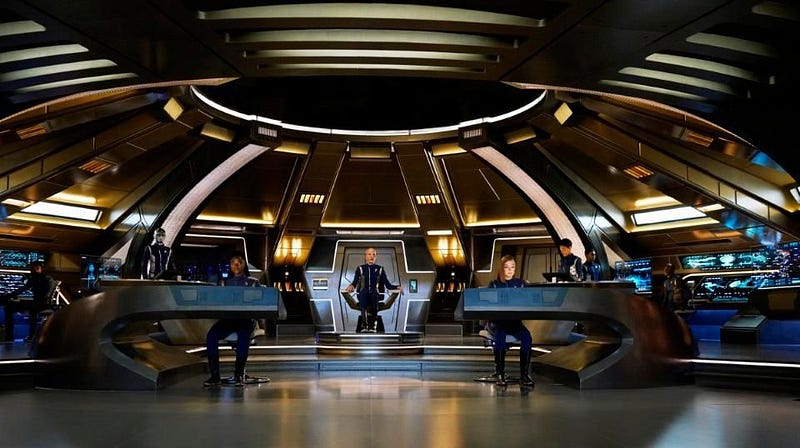
Finally, Burnham is forced to confront her failings as a human being throughout the series. Her repeated treachery. Her inability to tell the truth to Saru. Her decision to save the Emperor because of her own regrets. Her lack of internal strength to see Tyler, and then her failure to own up to her continued love for him. Everyone sees her weakness: Saru, Georgiou, Tilly, Tyler. Yet all she can do is make excuses. The first rule of ethics is you must be honest with yourself about yourself, and until Burnham can do that — something she’s been unable to do all series long, particularly since the Battle of the Binary Stars — her character growth will be fundamentally limited, even as everyone else around her blossoms.
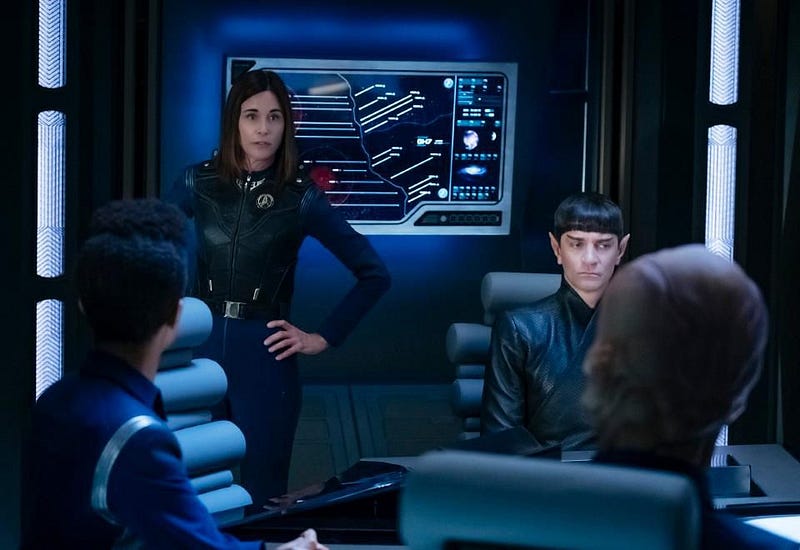
Summary: Learning the full impact of the war on the Federation is crushing, and it makes this episode much more about the cost of war and the desperation of the losing side against a take-no-prisoners enemy. It’s not in the Federation charter to fight fire with fire, but desperate times do call for desperate measures. The suspense you can create is somewhat limited, knowing that this is a prequel series to the major events, series, and movies of Star Trek canon. Still, how you survive and defeat a seemingly invincible foe is something we’re all on edge to see. The first season ends in just one more episode, and hopefully we get to see a satisfying finale where Burnham finally owns up to all she is and isn’t. Hopefully, we get not just a temporary victory, but the beginnings of what we all hope for from the series’ protagonist: real, substantial growth in all the ways that matter.
Ethan Siegel is the author of Beyond the Galaxy and Treknology. You can pre-order his third book, currently in development: the Encyclopaedia Cosmologica.





